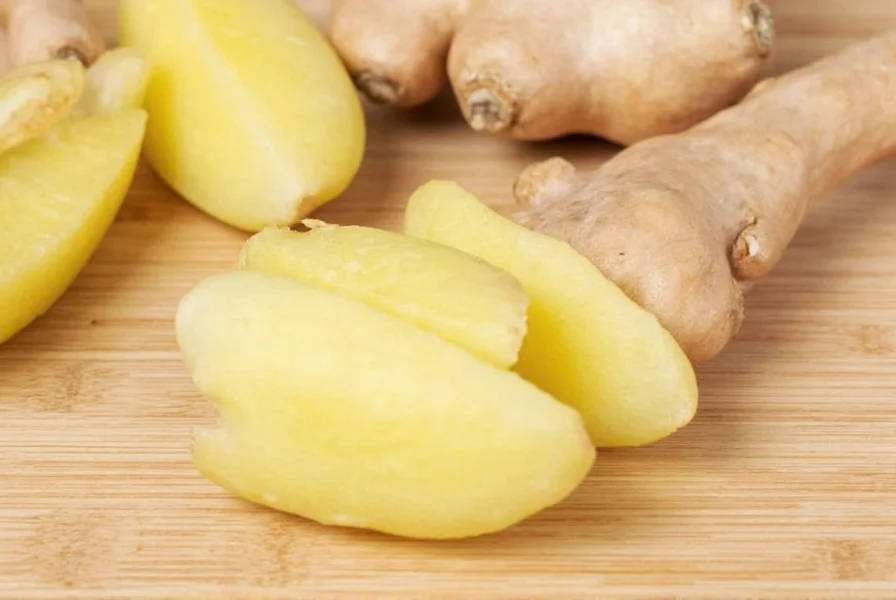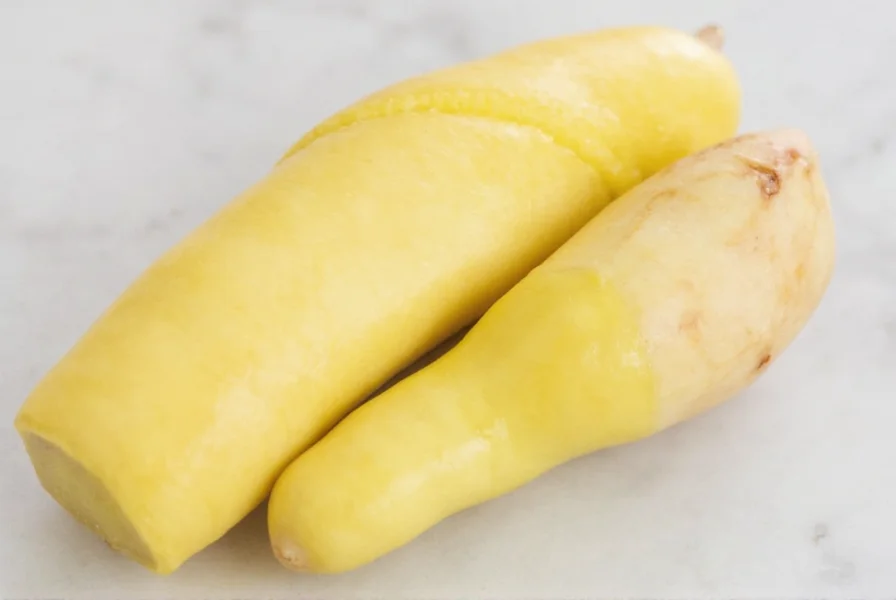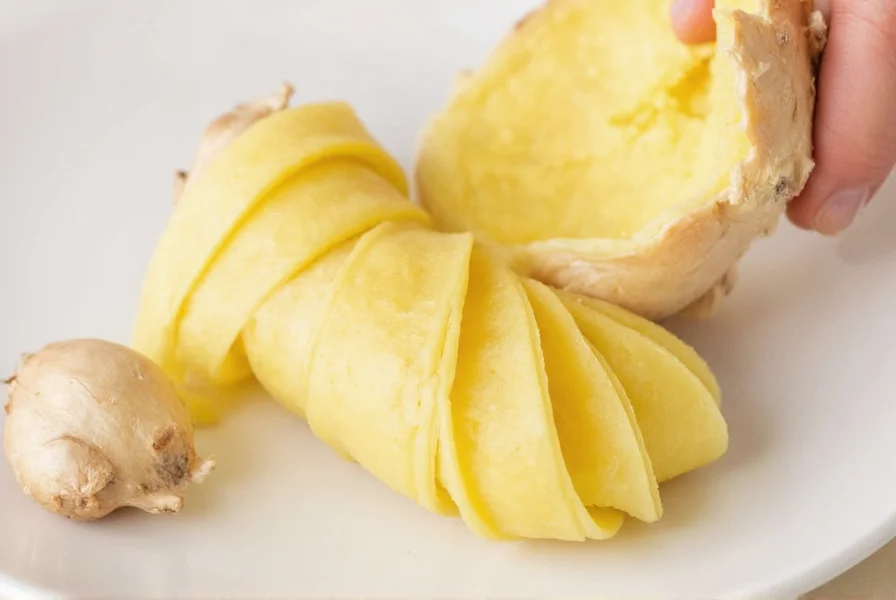Peeling ginger root can be frustrating due to its irregular shape and papery-thin skin that clings tightly to the flesh. Many home cooks waste valuable ginger using improper techniques, but with the right approach, you can maximize your yield while minimizing effort. Understanding how to peel ginger root easily transforms this potentially tedious task into a quick kitchen skill that preserves more of the valuable rhizome.
Why Ginger Peeling Presents Unique Challenges
Ginger's knobby, uneven surface and fibrous texture make it unlike most other root vegetables. The skin is exceptionally thin—often less than 1/16 inch thick—but adheres stubbornly to the flesh beneath. Traditional vegetable peelers frequently catch too much flesh or get stuck in ginger's crevices, while knives require precision that wastes significant product. This explains why many people search for the best way to peel fresh ginger without unnecessary waste.
Three Effective Methods for Peeling Ginger
| Method | Best For | Waste Level | Difficulty |
|---|---|---|---|
| Spoon Technique | All ginger types | Lowest | Easy |
| Vegetable Peeler | Larger, smoother pieces | Moderate | Moderate |
| Knife Method | Small amounts or precise work | High | Difficult |
The Spoon Method: Most Efficient Technique
Renowned among professional chefs, the spoon method consistently delivers the best results for removing ginger skin. Here's how to execute it properly:
- Select a sturdy teaspoon (the smaller bowl provides better control)
- Hold the ginger firmly in one hand and the spoon in the other
- Position the edge of the spoon against the ginger skin at a 30-degree angle
- Apply gentle pressure while scraping along the natural contours of the root
- Rotate the ginger as you work to access all surfaces
This technique follows ginger's irregular shape perfectly, removing only the papery skin while preserving nearly all the usable flesh beneath. The curved edge of the spoon naturally conforms to ginger's curves, making it the most effective method for peeling ginger without wasting valuable product.

Vegetable Peeler Alternative
When working with larger, relatively smooth pieces of ginger, a standard Y-shaped vegetable peeler can work adequately. For best results:
- Choose a sharp peeler with a swivel blade
- Work with ginger pieces at least 1 inch in diameter
- Peel in the direction of the fiber (lengthwise)
- Avoid pressing too hard to prevent excessive flesh removal
This method works reasonably well for straight sections but becomes problematic around nodes and crevices where the peeler catches and removes too much flesh.
Knife Technique for Precision Work
When you need only a small amount of ginger or require precise shaping, a paring knife offers control at the cost of efficiency:
- Trim off any major protrusions with a chef's knife first
- Use a small, sharp paring knife to carefully remove skin
- Follow the natural contours rather than cutting straight down
- Work under running water to prevent slipping
While this method provides precision, it typically results in 20-30% more waste than the spoon technique, making it less ideal when working with larger quantities.
Do You Actually Need to Peel Ginger?
Many recipes call for peeled ginger, but this isn't always necessary. The skin contains valuable nutrients and fiber. For most cooking applications:
- Young ginger (pale yellow with thin skin): Often doesn't require peeling
- Mature ginger (thicker, papery skin): Benefits from peeling for texture
- Grated or finely minced ginger: Skin can remain if thoroughly cleaned
- Whole pieces for simmering: Skin can stay on and be removed later
When deciding whether to peel ginger before grating, consider your recipe's texture requirements. For smooth sauces or beverages, peeled ginger yields better results, while rustic dishes can accommodate unpeeled ginger.
Pro Tips for Handling Ginger After Peeling
Once you've successfully peeled your ginger, follow these professional recommendations:
- Store peeled ginger in a sealed container with a damp paper towel
- Submerge in sherry or mirin to preserve flavor and prevent drying
- Freeze whole peeled roots for up to 6 months (grate directly from frozen)
- Place a small bowl of water nearby while working to prevent ginger juice from irritating skin
For frequent ginger users, consider peeling and freezing in one-inch chunks—this ginger preparation technique saves significant time during meal preparation while maintaining optimal freshness.

Common Ginger Peeling Mistakes to Avoid
Even experienced cooks sometimes make these errors when attempting to peel ginger root easily:
- Using a dull tool that crushes rather than removes skin
- Applying excessive pressure that wastes edible flesh
- Trying to peel against ginger's natural fiber direction
- Working with cold ginger (room temperature is easier to handle)
- Peeling immediately after washing (pat dry first for better grip)
Understanding these pitfalls helps refine your ginger peeling techniques for maximum efficiency and minimal waste.
Frequently Asked Questions
Can I use a potato peeler to peel ginger?
Yes, but with limitations. A Y-shaped vegetable peeler works reasonably well on larger, smoother sections of ginger but struggles with the knobby parts and often removes too much flesh. The spoon method generally produces better results with less waste, especially for the irregular shapes common in ginger roots.
How do I prevent my fingers from staining when peeling ginger?
Ginger juice can temporarily stain fingers yellow-orange. To prevent this, work over a small bowl of water to rinse your hands periodically, or wear thin food-safe gloves during the peeling process. Any residual stain will fade within a day or two with normal hand washing.
Is it necessary to peel ginger for tea?
Peeling isn't strictly necessary for ginger tea. Thoroughly wash unpeeled ginger and slice thinly or grate coarsely. The skin contains beneficial compounds, though some prefer peeled ginger for a smoother texture. If using mature ginger with thick skin, peeling may improve the final tea's mouthfeel.
What's the best way to store peeled ginger?
Store peeled ginger in an airtight container with a slightly damp paper towel in the refrigerator for up to 3 weeks. For longer storage, submerge in sherry or mirin (which also enhances flavor) or freeze in one-inch chunks for up to 6 months. Frozen ginger can be grated directly without thawing.











 浙公网安备
33010002000092号
浙公网安备
33010002000092号 浙B2-20120091-4
浙B2-20120091-4